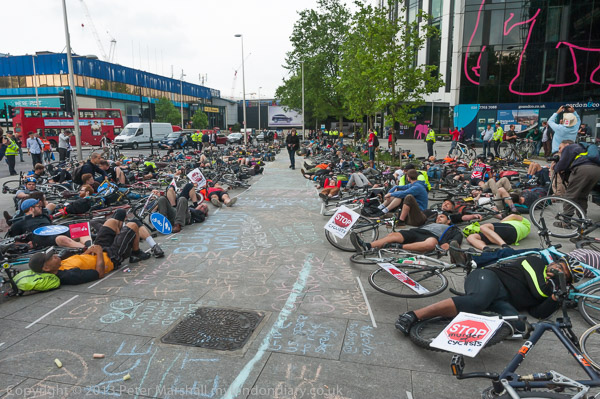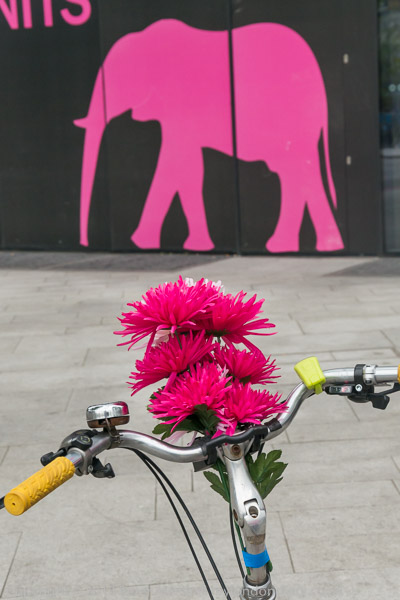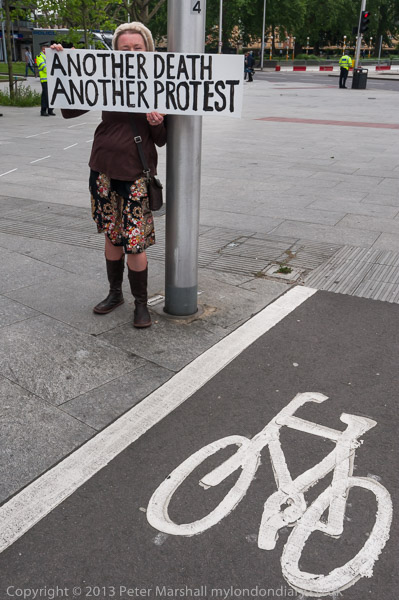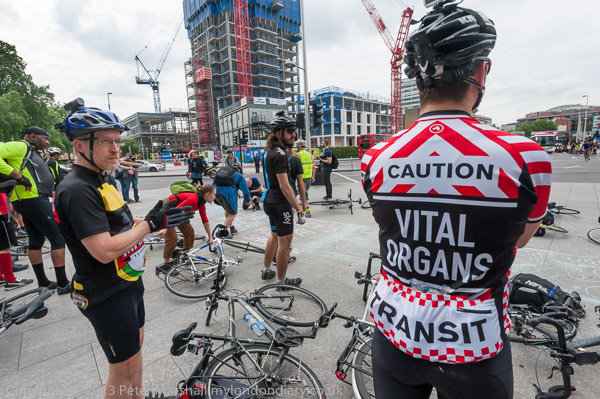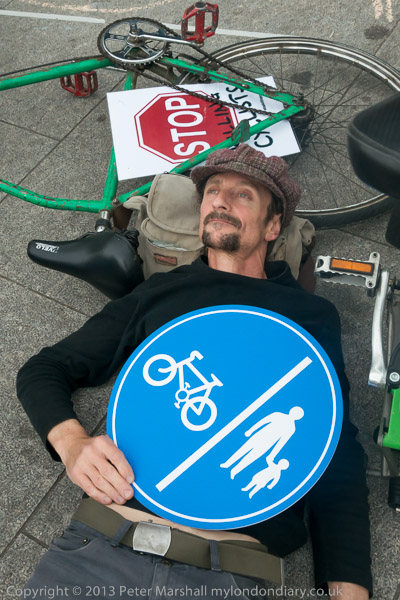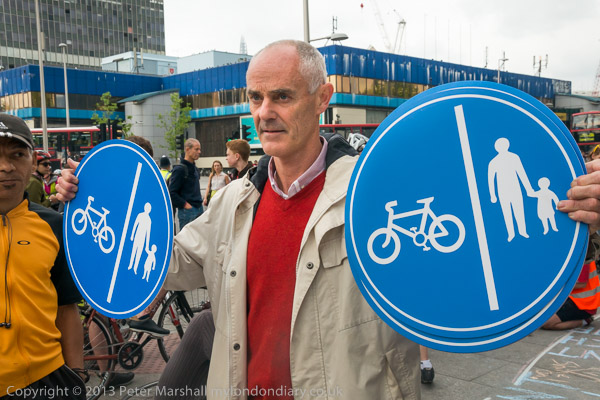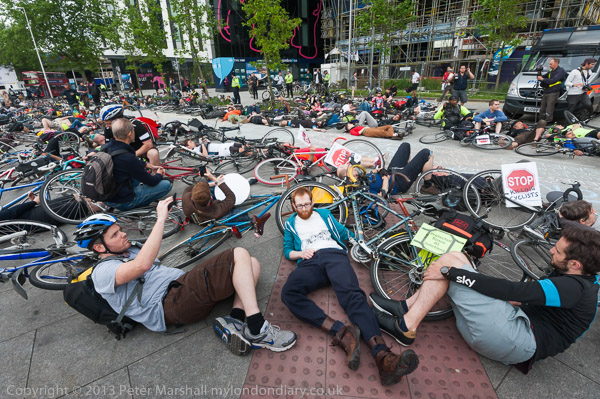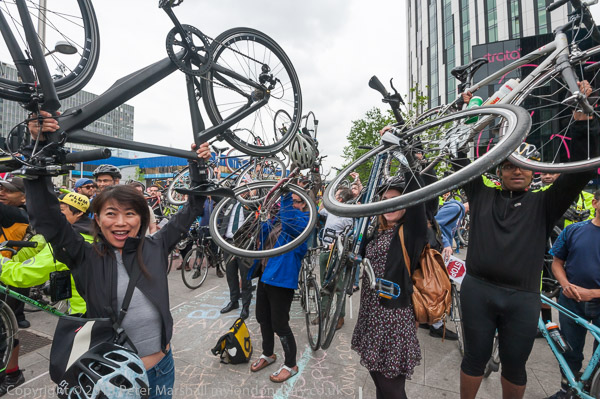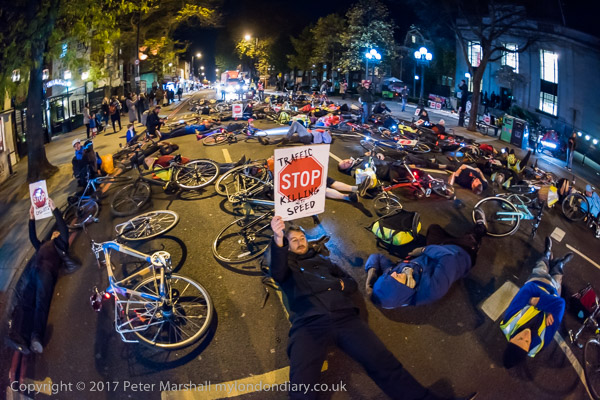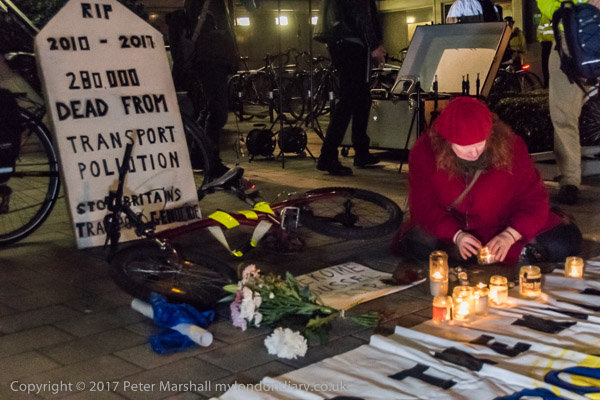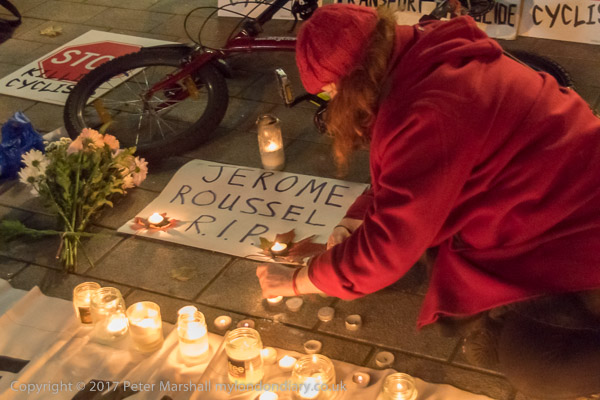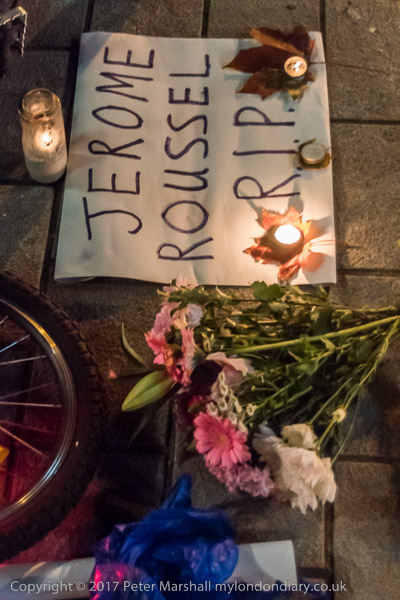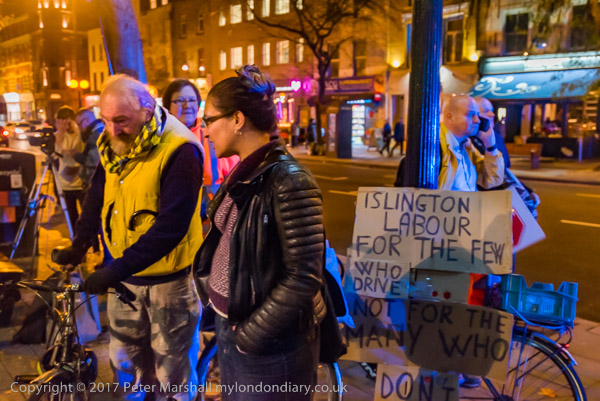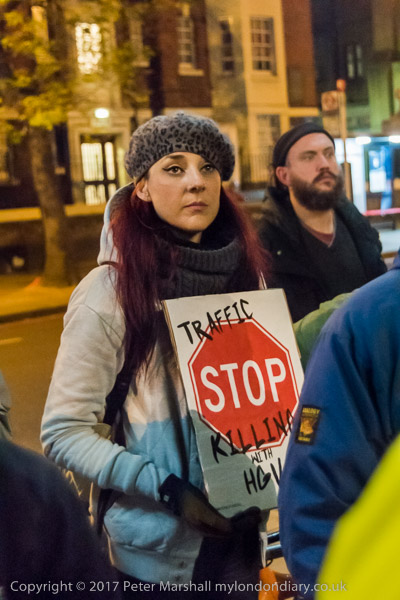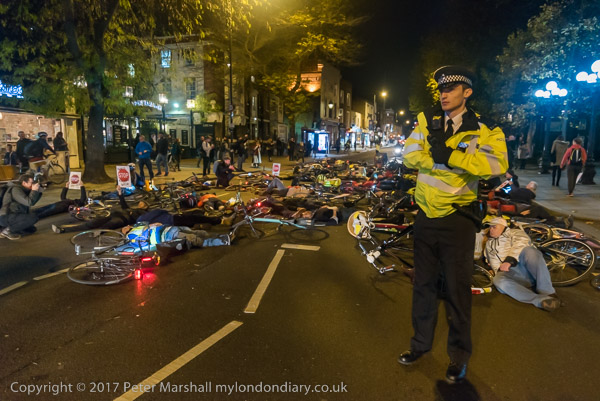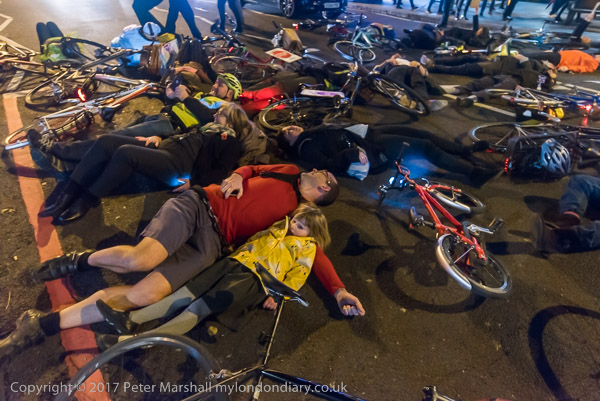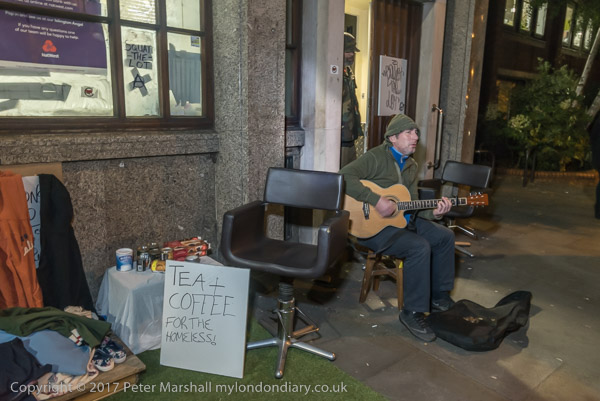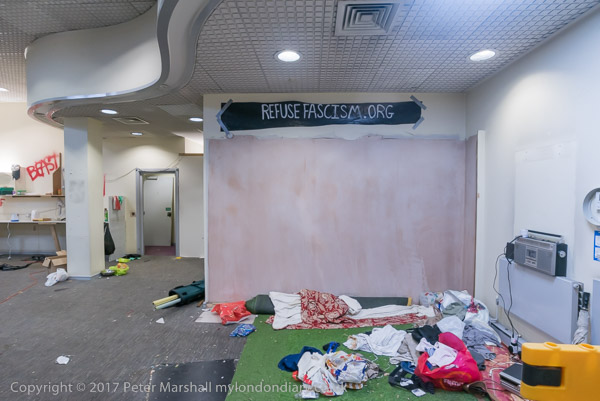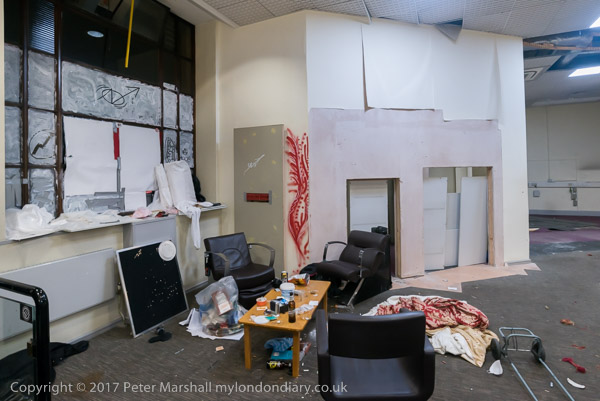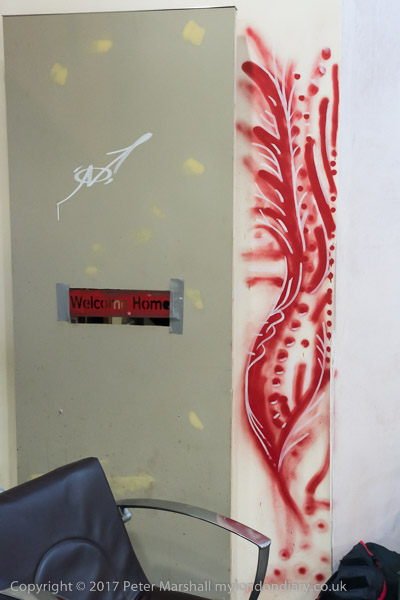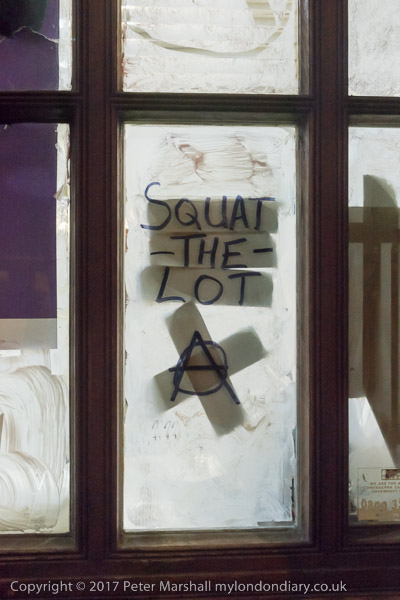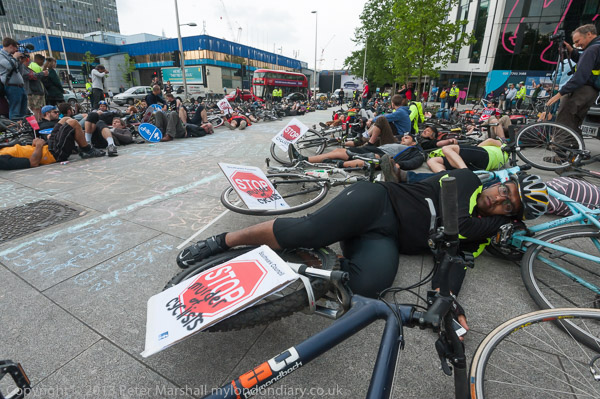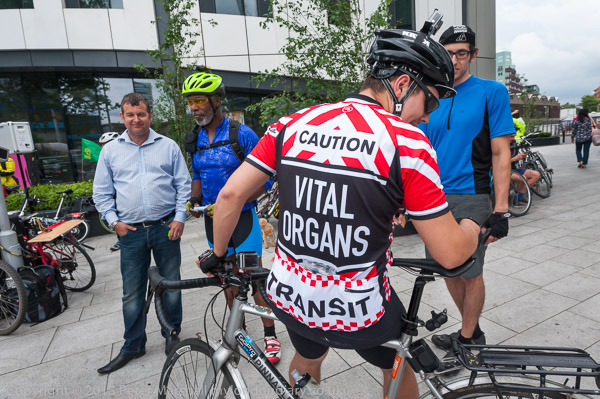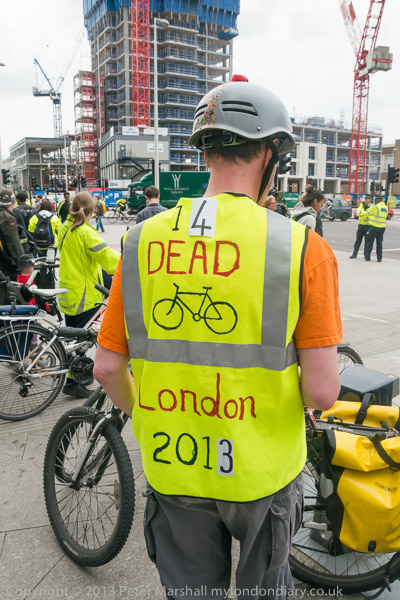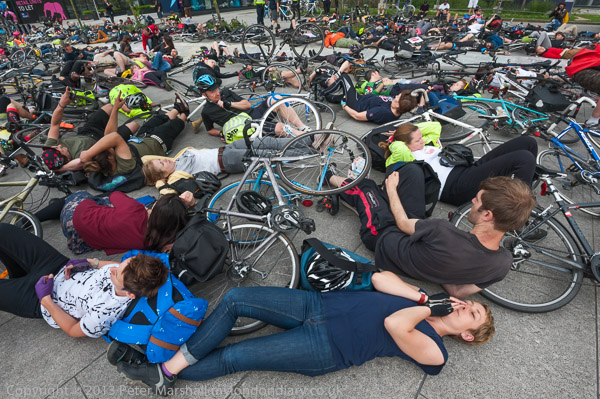Pollution, Corporate Greed & Cycle Deaths: Protests in London on Thursday 12th October 2017.
Roadblocks against Air Pollution – Trafalgar Square
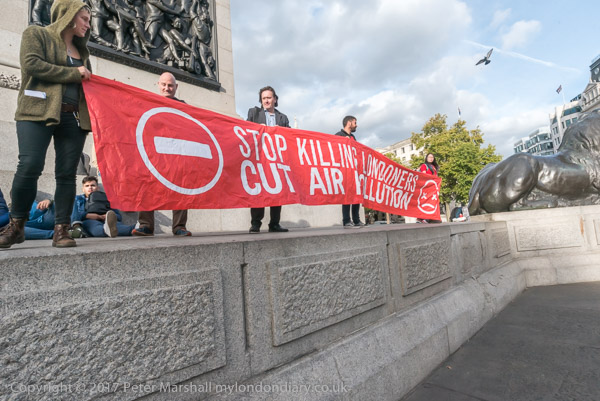
On the day the the London Assembly were discussing the problem of air pollution in London, campaign group ‘Stop Killing Londoners’ carried out a series of short protests holding up traffic in London to draw attention to the problem. They had begun the day by a briefly blocking Tower Bridge, close to City Hall, in the morning rush hour, too early for me to easily cover. Many had criticised the group for these protests which hold up traffic, but it proved effective for getting some media coverage for the issue, when almost all protests go unreported.
Their message was simple. The early deaths each year of almost 10,000 Londoners due to air pollution is a health emergency and the politicians need to prioritise the lives of Londoners over the special interests of the car and oil companies.
As well as early deaths, air pollution is also the cause of health problems that make life miserably for many as well as being a drain on the resources of our health system. And road traffic is a major source of pollutants including nitrogen oxides and particulates that cause most of these health problems.
Roadblocks against Air Pollution
Prime Minister, Please Sentence – Downing St
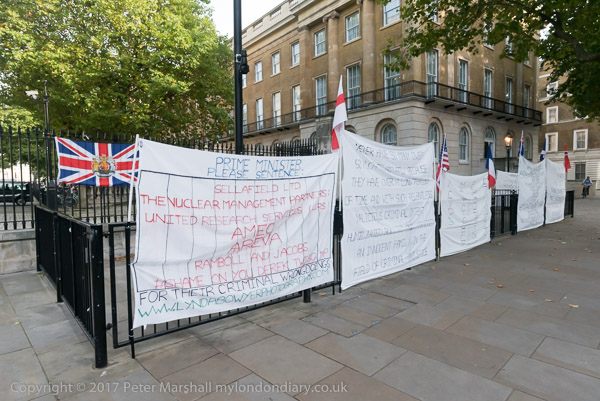
As I rushed down Whitehall later I came across this long row of banners along the whole frontage of the protest pen opposite Downing Street. They relate to the case of John Marshall (no relative) a former nuclear engineer who alleges he is a victim of corporate greed which has ruined his career and his family since around 2010, naming Amec, Sellafield and others involved including Derek Twigg MP and calling for justice. Twigg has been Labour MP for Halton in Cheshire since 1997.
There had been an earlier protest with the same banners here a few months before but there was nobody present to ask more about the case when I made these pictures and it remains something of a mystery.
Prime Minister, Please Sentence
Cyclists Kensington Vigil & Die In – Kensington & Chelsea Town Hall
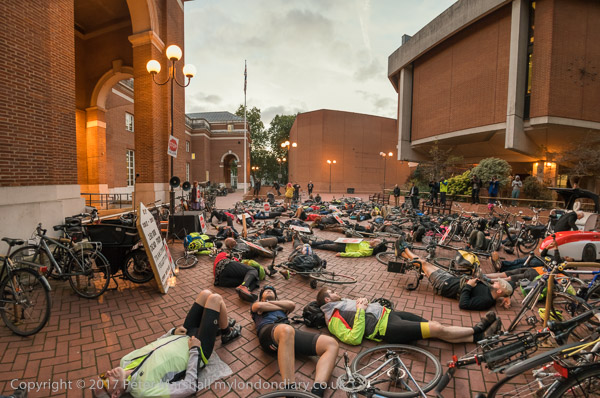
Campaign group Stop Killing Cyclists held a die-in vigil outside Kensington & Chelsea Town Hall in protest after a young 36 year old woman died at Chelsea Bridge last week when the driver of a heavy goods vehicle turned left crushing her, the second cyclist killed by a HGV in the borough this year.
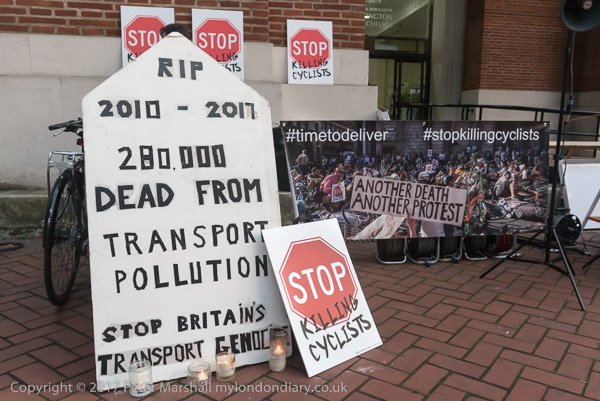
The point out that Kensington & Chelsea is one of the worst London boroughs in opposing plans for protected cycle lanes, bus-stop cycle by-passes and 20mph speed limits. The borough had failed to build even a single metre of protected cycle lanes, and cyclists in the borough including children and pensioners have to share the roads with lorries, cars and buses.
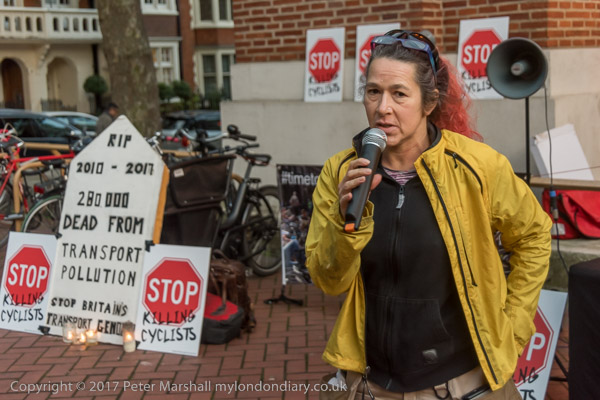
The protesters demanded that the borough end its opposition to safer cycling schemes and provide suitable infrastructure to make cycling safe in the area. They also called on TfL to redesign the Chelsea Bridge roundabout where 36 accidents had been reported in the previous year.
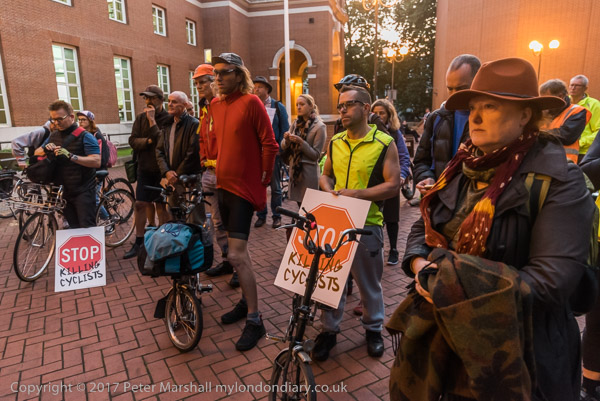
Many of the cyclists who die each year do so when lorries turn left at junctions with the driver unable to see a cyclists on the left of them who gets crushed under their heavy vehicle. The protest demanded that the Transport Minister legislate urgently to introduce the long-demanded regulations for safer HGV design which would eliminate the huge blind areas and get older unsafe vehicles off the road.
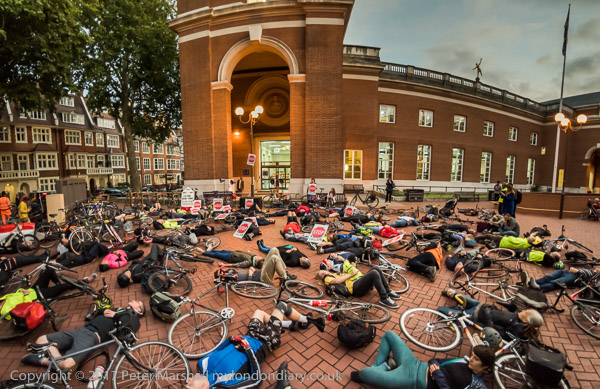
TfL had made plans to fine lorries and other vehicles which illegally drive into mandatory cycle lanes, but have been held up by doing so as the Transport Minister has not issued to order to allow them to do so. Protesters demaned this be issued immediately.
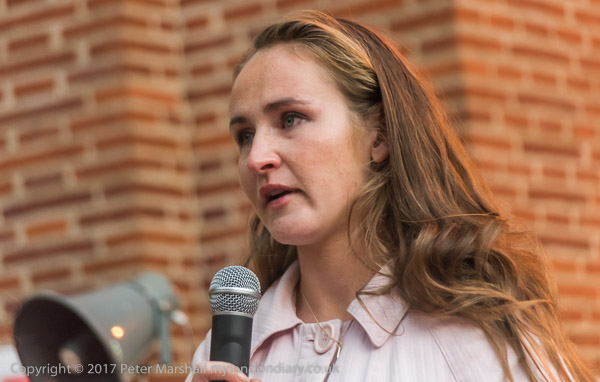
Among those who spoke at the event were Victoria Lebrec, a cyclist who had to have a leg amputated after a skip lorry failed to see her, Stop Killing Cyclists co-founder Nicola Field, other cyclists who had survived accidents and Cynthia Barlow OBE whose daughter was killed by a concrete lorry in 2000. She had become chair of the charity RoadPeace which empowers and support the families of those who are killed and injured on the roads and fights and fights to improve vehicle safety.
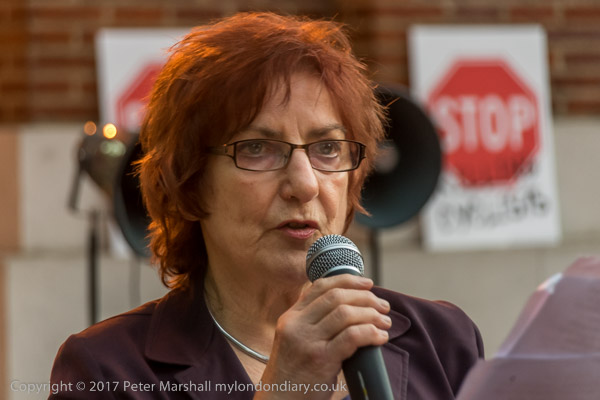
Cycling instructor Philppa Robb said that Kensington & Chelsea has a good cycle training programme but the borough has totally failed to proved a safe infrastructure for cyclists and so few residents feel safe to use their bikes.
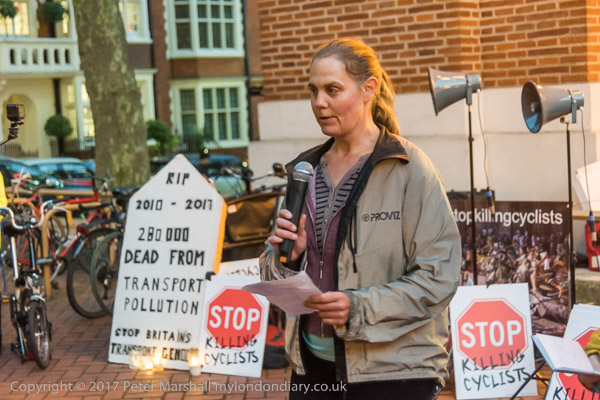
After the die-in Stop Killing Cyclists co-founders Donnachadh McCarthy spoke and Nicola Field read out one of the posters that someone had brought to the protest, “Why does Kensington & Chelsea give rebates to rich f**kers yet cheapskates vulnerable suckers? Safe Streets 4 All’“
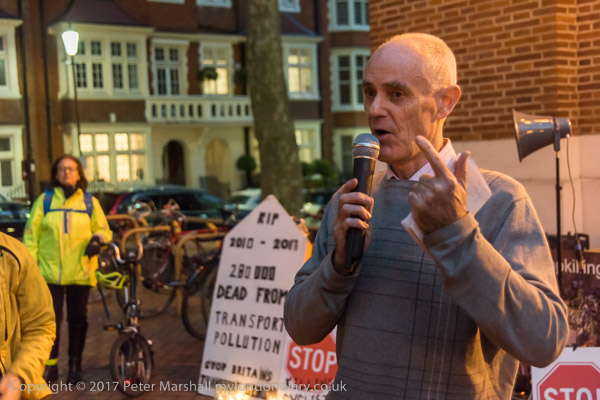
The council implemented a partially segregated cycle lane in Kensington High Street in 2020 but it was removed after vocal complaints from some motorists. In 2023 they consulted on proposals to restore the cycle lanes there and on Fulham Road and found a large majority were in favour of some restoration. However this was only for a dashed line advisory lane rather than one properly segregated from traffic, although this may later be upgraded.
More at Cyclists Kensington Vigil & Die In.
